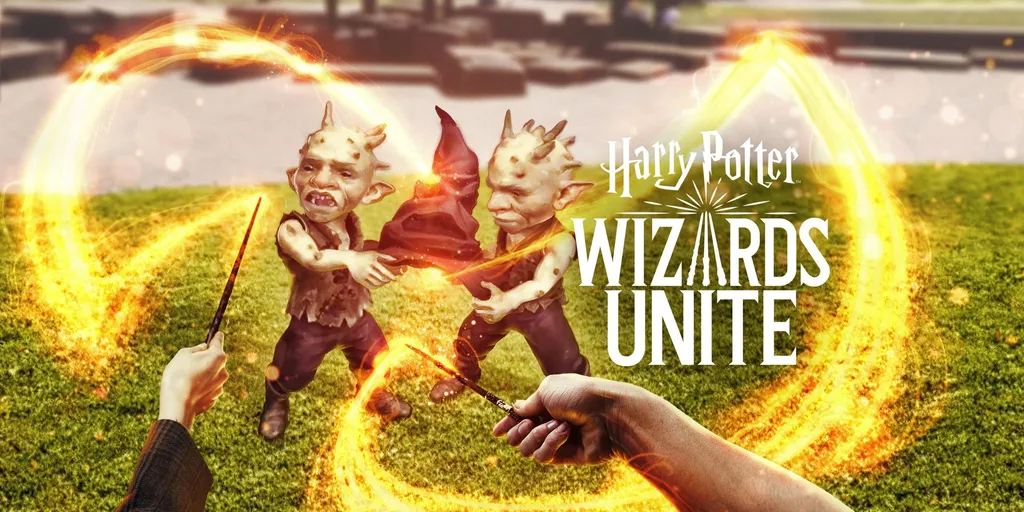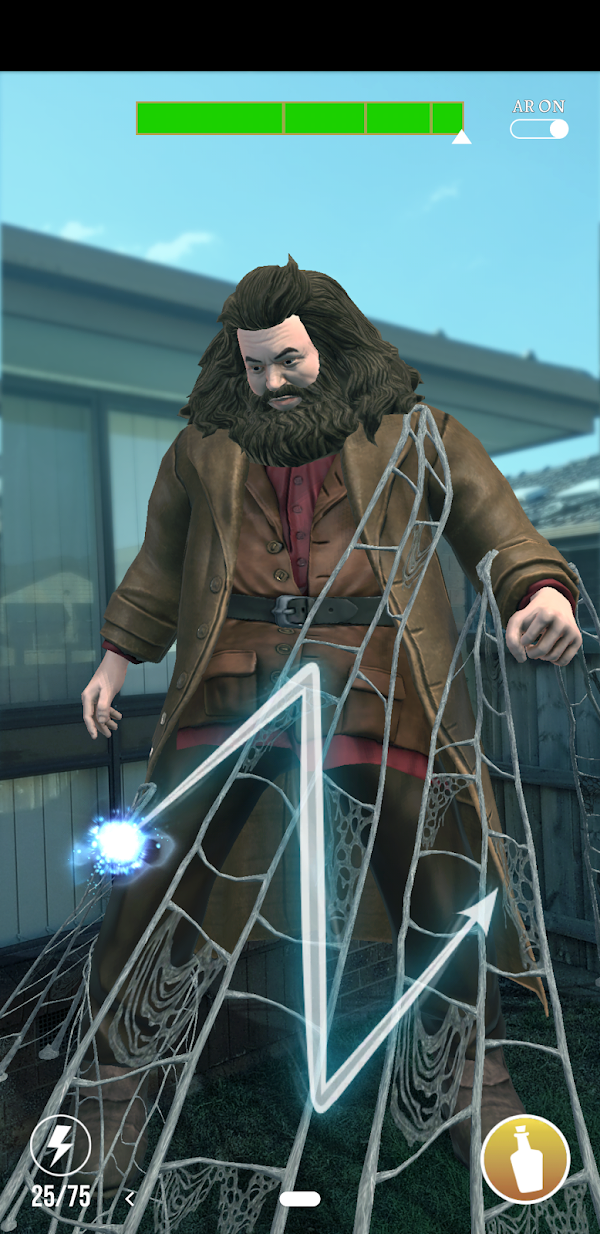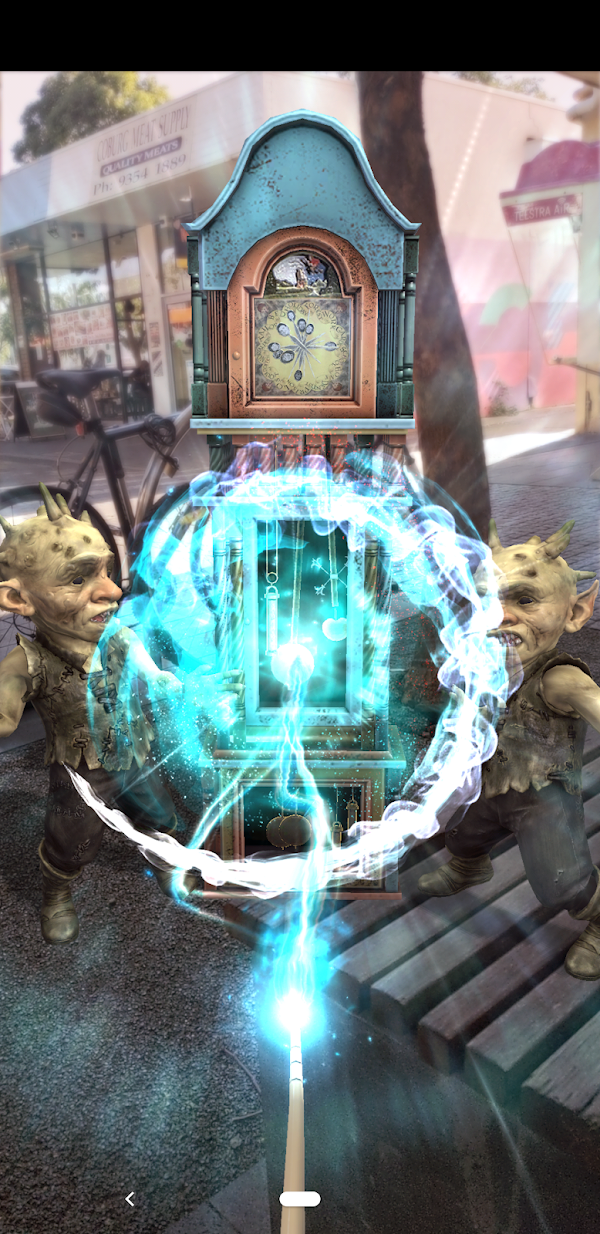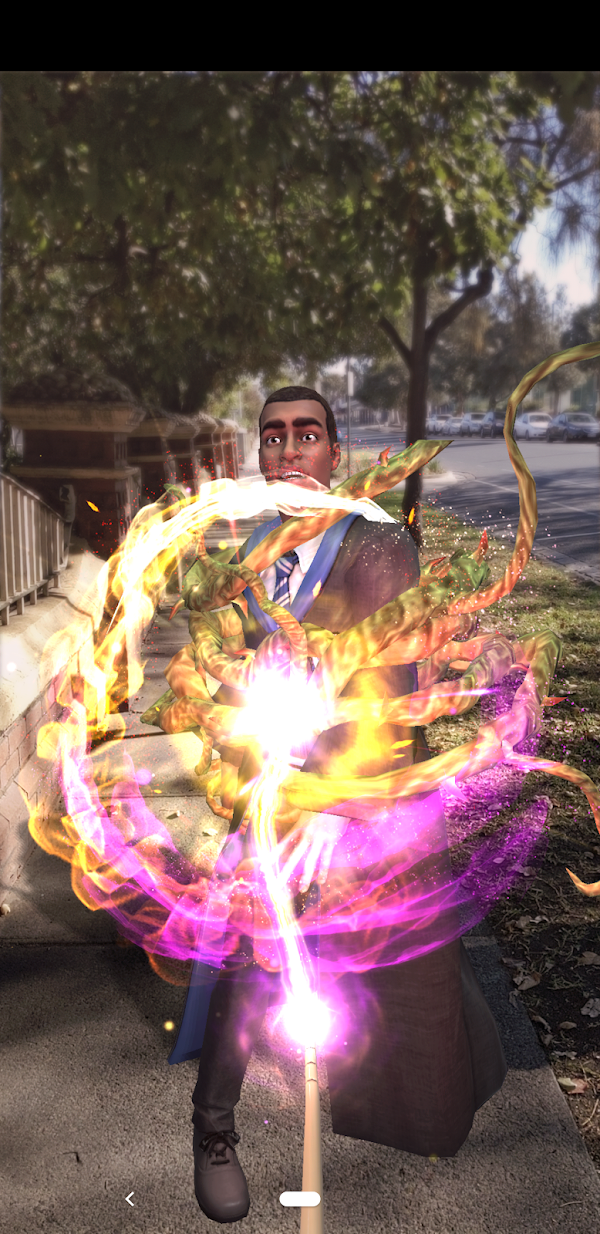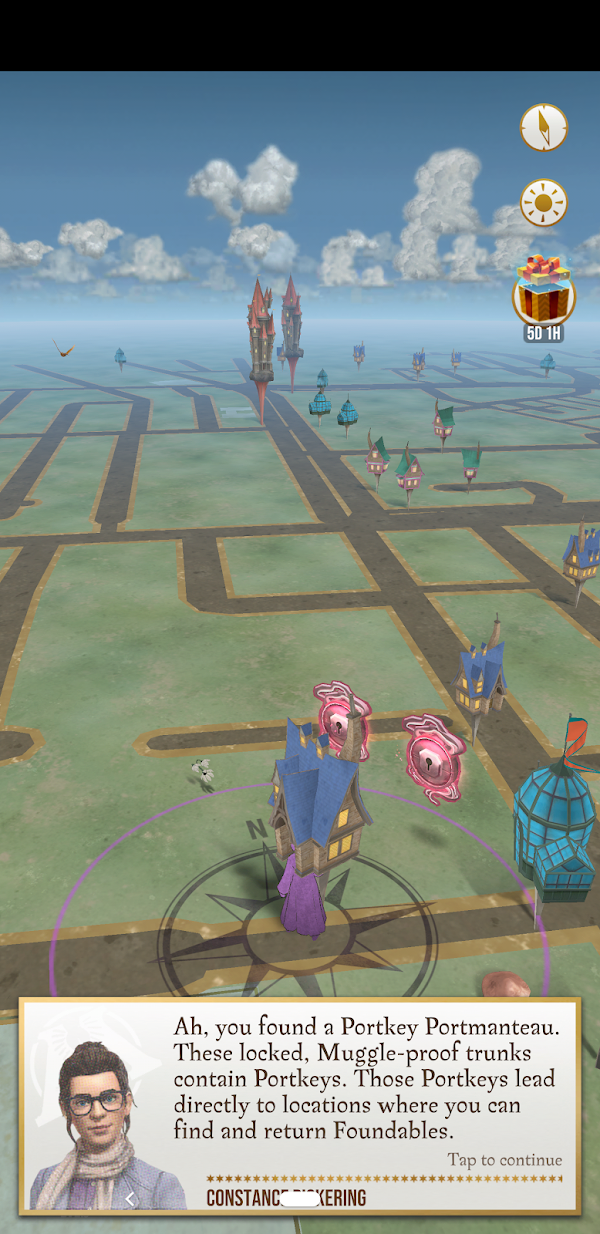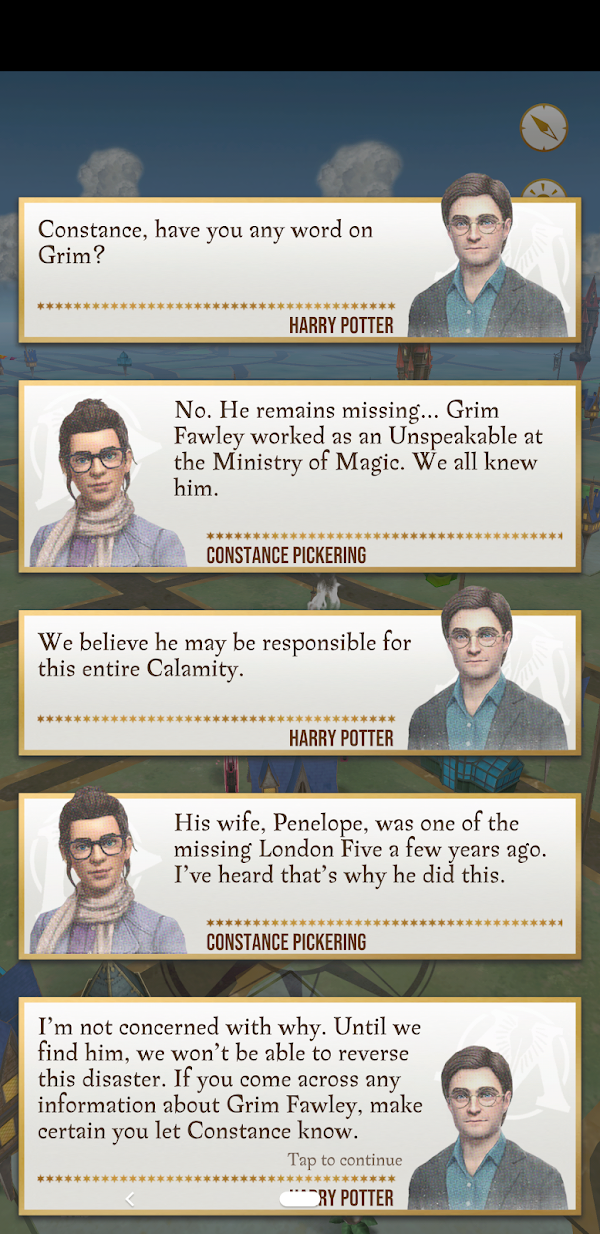It’s difficult to make AR map-based games unique. Pokémon Go, Ghostbusters World, and now Harry Potter: Wizard’s Unite all feel similar in a fundamental way. They all involve walking around in real life while a virtual avatar does the same on your phone, capturing different types of beasts, and taking on checklist challenges that include the first two items on this list.
So when you look at Wizard’s Unite, which was just released this week, it’s important to look at how it tries to make itself stand out. It’s developed by Niantic, the creators of Pokémon Go, so a lot of the game’s DNA is literally the same—they’d be foolish not to use the same infrastructure they’ve been building since Ingress launched in 2012.
I’ve been playing Wizard’s Unite since Tuesday when Niantic and Warner Bros. Games hosted a launch event at Universal Studios Hollywood, the home of the Wizarding World of Harry Potter. It felt fitting to play it in the makeshift world of Hogwarts The first thing I noticed is that Wizard’s Unite looks vastly different from Pokémon Go. Booting it up shows off fantastical buildings, a rustic outline of the surrounding streets, and streaks of magic floating in the sky.
It’s a wonderful sight filled with music that will make Harry Potter fans smile. Once you start playing some of that magic wears thin though, especially if you aren’t a lover of J.K. Rowling’s wondrous universe.
After loading the game up things get confusing and frustrating. You learn that a mysterious calamity scattered magical items and people all over the world and you have to help restore them to their rightful place. As you roam the map instead of spotting Pokemon they’re replaced by different characters and items trapped by “confoundable” magic. You must capture these confoundables to add them to your registry. Collecting those, leveling up your character, and fighting through fortresses (the alternate version of Pokémon Go raids), are the main elements of Wizard’s Unite.
The problem is that all these things are tied to your energy, a mechanic that limits how much you can capture and fight with magic. If you run out of energy you need to collect more from inns, other challenges, or buy them via microtransactions in the in-game store. Right now, the scales are heavily tipped in the direction of buying with real money. Inns, which are like Pokémon Go’s PokeStops that give out Pokéballs, don’t give you much energy, so you’ll run out quickly on your own.
It’s Wizard’s Unites’ greatest weakness. Fighting confounded magic and battling users of the dark arts is a lot of fun, just like Pokémon Go was at the start. It clutches onto that collectathon mindset and encourages you to get out and explore your neighborhood to see how Niantic has adapted it to the world of wizards and witches. The problem is that it also discourages you from continuing to play once you run out of energy. It’s clear that higher levels will be a continuous grind and if you don’t live in a big urban center like Los Angeles you won’t be able to visit as many inns or fortresses. Major lessons from Pokémon Go weren’t applied here: energy sources are few and far in-between (even in a major city), my phone’s battery was drained quickly, and there is no way to gain rewards for walking unless the app is open (something that Go solved by syncing with Google Fit to see how far you walked since last opening the game.)
One big positive in Wizard’s Unite at launch already is its combat and lore. You aren’t just trying to capture creatures by throwing a ball at them, you’re tracing a relevant spell on the screen to counteract confoundable magic. It’s a wonky system that works half the time, but when the screen connects with your finger accurately it feels wonderful.
However, it is frustrating that there is little to no balance in Wizard’s Unite, making some combat encounters feel pointless. I’ve encountered creatures that are at a much higher level, marked as a certain difficulty on a meter before battle, that seem nearly impossible to capture. It’s not clear why I’m encountering them and they drained a good amount of my energy before I even knew how to use it.
There are other things that make this AR map game different. You can find items lying on the ground around you, craft potions to help make your magic stronger, and choose a profession that you can level up with a skill tree. All features that make Wizard’s Unite feel unique. All features that are hindered by the games energy system.
There are three professions in Wizard’s Unite: Auror, Professor, and Mazigoologist. They each have a bit of lore behind them but they come down to warrior, healer, and support classes that all have different advantages and disadvantages in combat. Their abilities break down in a simple way, Auror’s are strong against dark magic and weak against beasts, Professors are strong against curiosities and weak against dark magic, and mazigoologists are strong against beasts but weak against curiosities.
Each profession has a skill tree with small upgrades, although none of them have a huge effect on gameplay. It’s a nice level of depth compared to Pokemon Go, but isn’t anything to write home about. I ended up choosing the class that sounded the most interesting, Auror, but it hasn’t affected how I’ve played the game much. More serious AR gamers might form a squad to fight through fortresses efficiently.
These systems don’t do anything to solve the energy problem though. Systems like these that prevent players from diving in deeper are the primary issue with map based AR games today. They stifle play sessions by forcing you to either buy more energy, which took the form of Pokéballs in Pokémon Go, or walk to in-game inns that shell out a measly amount of energy that might let you play a little longer. It’s a crummy way to design a game meant to encourage exploration.
Wizard’s Unite shouldn’t make energy drops more plentiful, they should scrap the system altogether. There is nothing in the Harry Potter universe that makes the concept of ‘energy’ make sense. Monetizable cosmetics would be a far more interesting way to make the game profitable.
Wizard’s Unite already lets you customize your own wizard identity with photo filters and a swanky ID, but that’s it. Imagine being able to deeply customize your own avatar, something already available in Pokémon Go, or create a wand that is actually tied to the RPG mechanics in the game (right now all wands perform the same). These are features that may come later on, but after three years of Pokémon Go, why aren’t they in Wizard’s Unite at launch?
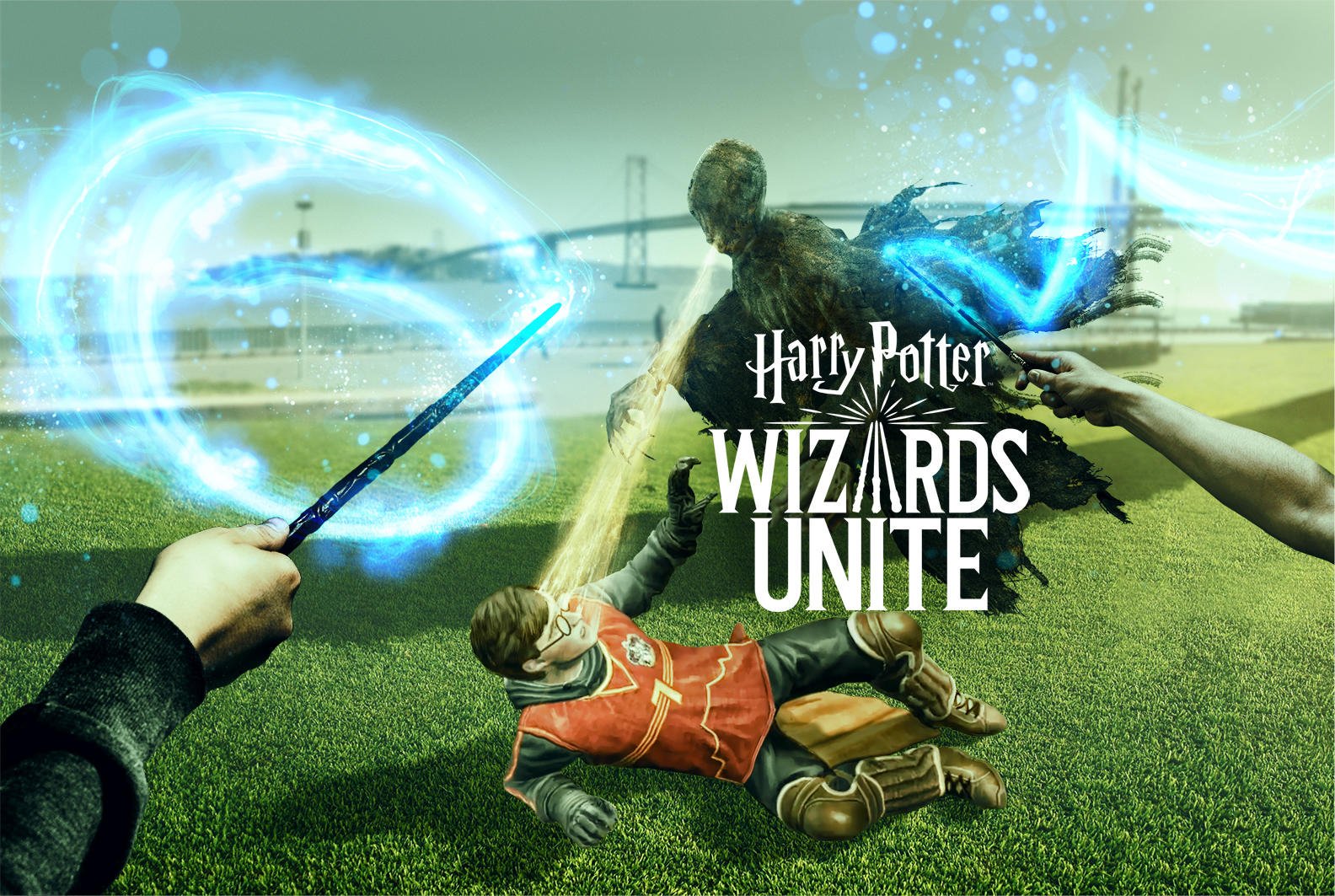
Wizard’s Unite is on the right path in standing out from Pokémon Go, the wand mechanics are promising if a bit lacking in depth, the RPG mechanics are compelling, and the universe is full of exciting details. It’s a shame that the energy system takes priority over all this, making what would be a fun experience quite dull.
To check it out for yourself, you can download Harry Potter: Wizards Unite for free on the Google Play store for Android or the App Store for iOS.

